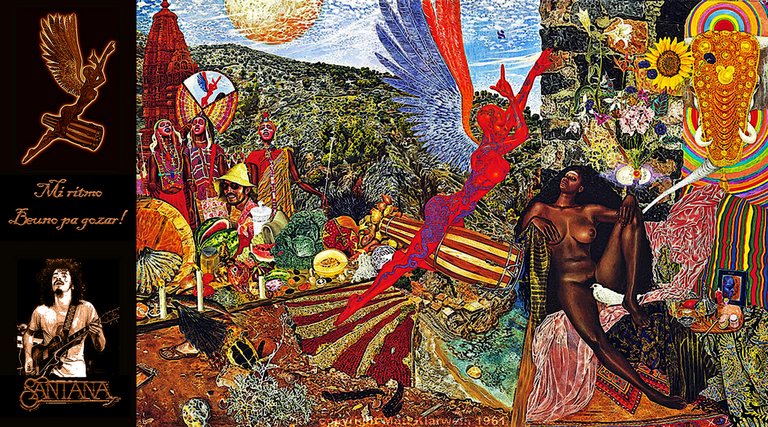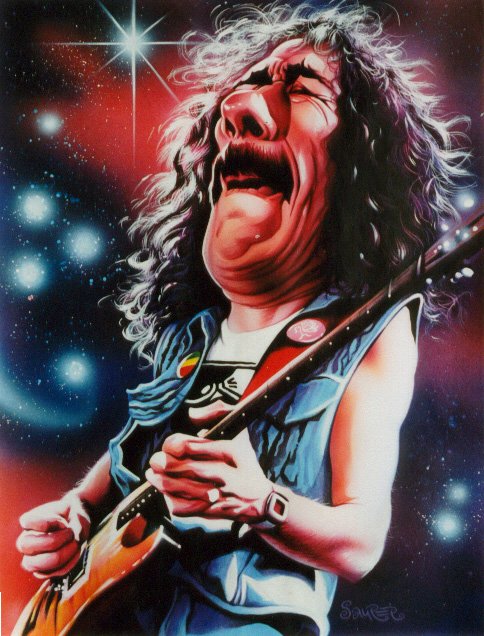ABRAXAS /SANTANA 🎷🎺
Abraxas (1970) is the second album by the Latin fusion band Santana, founded in San Francisco and a great success for their participation in the mythological Woodstock festival of '69. It's a strange album, with experimental leanings that come both from the desire to vindicate the Latin in the years of splendor of pop culture, as well as the enormous efforts that the most talented artists of the time were making to evolve popular music towards expressive possibilities never before suspected. Abraxas is almost entirely instrumental, vaguely conceptual and probably inspired by something we could call "cosmogony of the feminine", the name Abraxas being identified here with a talismanic figure from Gnostic mythology, the god of good and evil. The cover, a bizarre version of the Christian Annunciation by the painter Mati Klarwein, leads us to think that Abraxas is invested, as indicated in Hesse's Demian (The Story of Emily Sinclair's Youth), with feminine and somewhat esoteric qualities.

https://www.deviantart.com/sunsetcolors/art/0081-Santana-Abraxas-636266248
I think the album emanates femininity, especially understood from the sensual point of view that music made in Spanish-speaking America generally offers of women. Tracks like Black Magic Woman / Gipsy Queen, and Samba Pa Ti abound in this idea of feminine eroticism, the former giving witch-like qualities to a Fleetwood Mac original; the latter presenting us with a clearly erotic instrumental landscape whose notes seem to suggest sinuously wiggling silhouettes, wrapped in thick Caribbean sweat in the moonlight. Samba Pa Ti is surely Abraxas' greatest track, both in terms of its fame and in terms of what it might have weighed on the later development of instrumental rock. Nor can the version of Tito Puente's Oye Como Va, which everyone has heard here and there; or the stupendous introductory track Singing Winds, Crying Beasts, in which the band's instruments seem to sound like wild animals awakening from a slumber to begin their hunt; and the psychedelic instrumental-chorales Incident at Neshabur, Se A Cabo and El Nicoya, bordering at all times on jazz territory, go without praise. The two more "conventional" rock tracks, Mother's Daughter and Hope You're Feeling Better, while fitting perfectly into the album for their elaborate instrumentations, could well pass for mere concessions to less seasoned audiences.

https://www.deviantart.com/jsaurer/art/Carlos-Santana-83886242
What stands out in Abraxas? Above all Carlos Santana's bluesy guitar, crystalline and voluptuous, perhaps a bit over the top when the musician gets carried away improvising at some point. And then there are the percussions, the true Latin spirit of the work, charging what could have passed for a direct precedent of Anglo-Saxon progressive rock with a rare Central American electricity that gives it qualities of salsa-like torridness. In short, Abraxas is an essential work for all those who want to know where the fusion zeal that has flooded the music industry in recent decades comes from, and also to rediscover a pioneering Carlos Santana who had not yet become a guest artist on his own albums, and who was capable of giving coherence to works of an imagination and ambition beyond rock's obsession with the conventional structures of the charts.